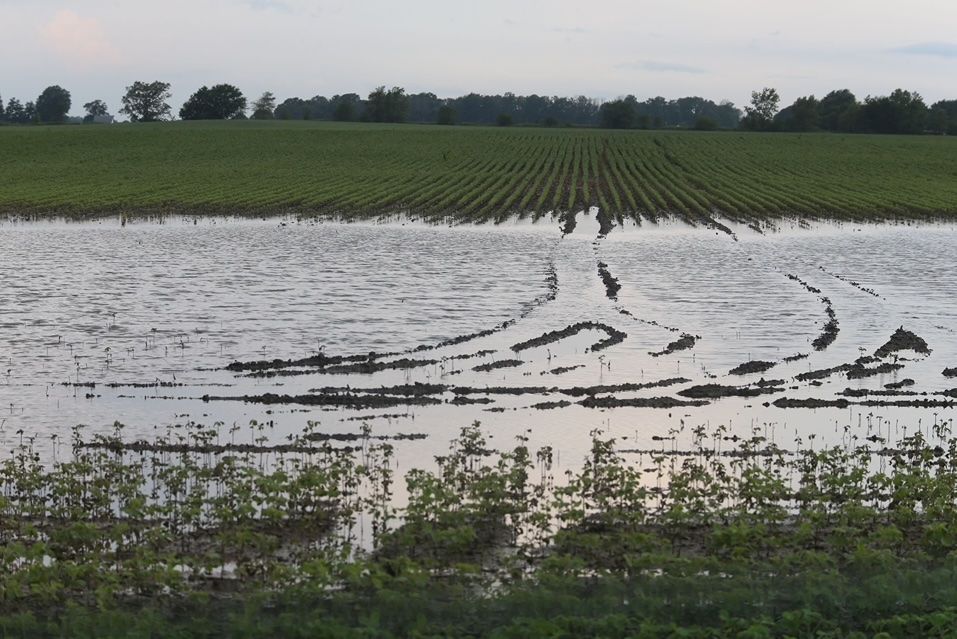Implementing Different Tillage Practices

Your ground determines what you can do on your farm — from the crops you grow to your tillage practices. For example, when some farmers experience years with extensive rainfall, no-till reduces soil erosion. On the other end of the spectrum, other farmers find value in working their ground in years of heavy rainfall to dry out the ground faster.
No-till, strip-till, conventional tillage and everything in between are all common across the United States, and most farmers have intention behind their preferred tillage methods. All tillage practices have a purpose on the farm, but some work better than others.
No-till on the farm
In no-till, a tillage method of increasing popularity, a farmer leaves the soil undisturbed except twice a year — when they plant a seed and when they apply and incorporate fertilizer. Leaving the soil undisturbed provides benefits such as an improved soil structure, increased microbial activity, water infiltration and other soil benefits, along with economic benefits.
Farmers across the U.S. have been increasingly interested in no-till practices since the 1980s. The method offers advantages to soil and crops, along with the economic benefits to farmers. Eric Adee, associate professor at the Kansas River Valley Experiment Field at Kansas State University, says the practice brings many noticeable changes in the soil and in the way farmers manage their ground.
“No-till can also help preserve soil moisture and protect the soil against wind and water erosion,” Adee said. “Depending on the amount of crop residue and the crop planted prior, you can have cooler soil temperatures.”
The benefits of no-till vary based on region, according to Adee. Farmers in the western areas of the U.S. may use no-till to suppress soil erosion due to stronger winds. Farmers in the eastern half of the U.S. experience far more rainfall than those in the west, and some use no-till to help with water erosion. Farmers in the southeast region of the country may look to no-till to help with soil compaction.
David Wessel, a farmer from central Illinois, says he has no-tilled ground for 35 years, and now, 100% of his acres are no-tilled. He uses no-till to help deal with the highly erodible ground he farms, plus he likes how much time he saves from not working ground.
“A lot of our reasoning for no-till was because of soil erosion. We have some pretty rough, highly erodible ground,” Wessel said. “The first farm we ever no-tilled, the erosion is down to zero. No dirt ever leaves the farm for, I’d say, 20 years now.”
Because of fewer passes through the field, no-till also helps farmers save money on labor, inputs and fuel costs. Farmers often see less soil compaction because of the reduced field traffic from typical tillage practices. No-till also allows crop residue to remain on the soil surface during decomposition, further protecting the soil from wind and water erosion. This generates an increase in organic matter and ultimately increases soil health, which leads to healthier plants and, typically, better yields.
“The soil is the biggest asset, and protecting that soil is critical,” Adee said. “It’s not something you get back in your lifetime.”
Keeping up with regular management practices
Adee advises farmers to keep in mind the management needed for a successful no-till operation. Even though the main idea of no-till is to reduce traffic across fields, farmers still need to keep up with weeds, insects and diseases.
“No-till will bring changes in how you manage your crops,” he said. “You have to think differently than you did in a typical tillage operation. There’s a whole different set of challenges when it comes to no-till.”
Adee says weeds are the most problematic to deal with on a no-till system. No-till removes the option to suppress weeds mechanically through tillage, so farmers need to use all the remaining tools in their toolbox to tackle weeds.
Farmers should maintain a regular weed management program. Adee encourages rotating herbicides, using multiple modes of action with every application and applying herbicides at the fully labeled rate. This helps reduce the chance of herbicide resistance while also giving full coverage control to the weeds. Adee also recommends following weed management programs that utilize both pre-plant and post-emergence applications to control weed seeds in germination.
Weeds aren’t the only issue farmers will face during the growing season, and they should continue to manage their insect and disease pressures in the field.
These same practices ring true in strip-till and conventional tillage operations. Farmers should avoid skimping on pesticide rates at all costs to help reduce the possibility of resistance.
“We’ll use multiple methods to try to control weeds,” Adee added. “Along with herbicides and crop rotation, no-till farmers will rely on row spacing or cover crops to be more effective.”
Although there are many benefits from not working fields, farmers who are interested in the practice need to realize the switch won’t happen overnight. Benefits from no-till develop over the years. It’s a practice farmers need to implement in their fields every year to see results.
“It takes several years to build up soil health and structure. You won’t see your best results in the first couple of years,” Wessel said. “But I would advise farmers not to be afraid to jump in and try it.”
Strip-till: Another viable option
Farmers not ready to make the jump to a fully no-till operation also have the possibility of strip tillage. Strip-till allows farmers to work the seedbed while leaving most of the field undisturbed between rows.
The benefits of strip tillage are similar to no-till. Strip-till aids with erosion issues and reduces compaction to help farmers save on input costs and time. Unlike no-till, strip tillage helps warm the soil and has less risk of poor planter performance, realizing some of the benefits of conventional tillage.
Seth Wenzel, a farmer from Kent, Illinois, who uses no-till, strip-till and conventional tillage practices, said he and his dad have been practicing strip tillage on their farm since 2011. Their primary focus when converting to a strip-till operation was how they could get higher yields and increase revenue with less manpower and fewer inputs.
“When we started strip tilling, we weren’t too concerned about microorganisms and soil health. Our biggest push was, ‘How can we do more with less?’” Wenzel said. “We wanted to produce more with less fuel, less iron and less labor.”
Wenzel said that since making the switch, they have saved money on inputs and manpower. Plus, their growing season starts about two to four days earlier than conventional tillage farmers.
“At the beginning of our growing season with strip-till, whether we fall-applied or spring-applied, we have been able to plant our crop a few days ahead of the neighbors who use conventional tillage,” Wenzel said. “Our strips are dried out and fit to plant earlier.”
Wenzel has also found since they’ve switched to strip-till and can place their corn seeds directly into nitrogen, yields have spiked.
“Our first year, we thought, let’s place the seed where the nitrogen is located. What we quickly found on our marginal soils, where we were doing strip-till compared to randomly applying nitrogen, was pretty healthy yield spikes with our corn yields in the bean stubble,” Wenzel said.
Is new required?
A fear Wenzel recognizes from farmers on the edge of making the switch to strip-till is the concern of purchasing new equipment. Unlike no-till, strip-till requires a different toolbar to run correctly. However, he said farmers shouldn’t be afraid to switch to a strip-till operation because they are worried they might break the bank.
Wenzel said all of the strip-till equipment on their farm, including the iron, bars and row units, is used. He said, for the most part, they have purchased nothing brand-new. He wants farmers to know you can still strip-till with used equipment.
“I would advise farmers not to be afraid to park the plow, and don’t be afraid of used equipment,” Wenzel said. “When people start strip-tilling, they think they have to do everything at once. Then they get sticker shock. You can do baby steps with strip-till and not make all purchases in one year.”
Both no-till and strip-till help the soil develop healthier structure, increase microbial activity and nutrients gained from crop residue, and reduce compaction and erosion.
Conventional tillage still has a place on the farm
In certain fields, no-till and strip tillage practices work well. But there are also instances where conventional tillage is warranted.
Although Wenzel has converted more of their acres to strip-till and no-till, he and his dad still use conventional tillage on some of their ground.
“There are some fields we have a lot of grain cart traffic on end rows or where semis have parked in the field. For us, we’ll run the chisel plow on the end rows where there is high compaction,” Wenzel said. “The other place we think it still pays are fields with flood damage where you have excess crop residue built up or damage causing gullies or ruts.”
Conventional tillage is also commonly used in fields with severe weed pressure, compaction problems or saturation issues. The practice helps bury surface weed seeds, break up the soil and help it dry it out faster
No matter what the method of tillage a farmer uses, the important takeaway is to know your fields.
“What guys are reading about in a farm magazine might not apply to their farms. Farmers in Illinois should not expect to use the same systems as those in Kansas,” Adee said. “Different parts of the country will have different issues.”
By following these guidelines and talking with agronomists and extension agents, farmers can transition to and maintain a successful tillage operation, whether it’s no-till, strip-tilled or conventionally tilled.
“There’s a lot of resources out there. I would recommend farmers get as much information as they can if they’re looking to switch part or all of their operation over,” Wessel said. “Do the research. Talk to people like other farmers who have done it and me.”



